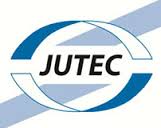EN 397 is a European standard that sets forth the specifications and requirements for industrial safety helmets. These helmets are essential protective gear designed to safeguard the heads of workers in various industrial and occupational settings across Europe. EN 397 ensures that safety helmets meet stringent criteria for design, testing, and performance. Here’s an overview of EN 397:
1. Purpose and Scope
EN 397 primarily focuses on safety helmets used to protect the heads of individuals working in industries and occupations where head injuries may occur. The standard aims to establish a consistent framework for the design, testing, and performance of industrial safety helmets.
2. Types of Protection
This standard covers a range of protective headgear, including hard hats and safety helmets. These helmets are designed to safeguard the head against different types of risks commonly encountered in industrial, construction, and similar work environments.
3. Design Requirements
EN 397 outlines design requirements for industrial safety helmets, ensuring they provide comprehensive protection while also being comfortable and user-friendly. These requirements encompass factors such as impact resistance, shock absorption, and chin strap performance.
4. Testing Procedures
Safety helmets that comply with EN 397 must undergo rigorous testing procedures to verify their compliance with the standard. These tests evaluate various aspects of performance, including impact resistance, penetration resistance, and resistance to flame.
5. Marking and Labeling
Products that meet the EN 397 standard must be marked and labeled accordingly. These markings typically include information about the manufacturer, product model, and compliance with the standard. Such markings help users identify suitable headgear for their specific needs.
6. Workplace Safety
Compliance with EN 397 is essential for maintaining workplace safety in Europe. Employers are often required to provide and enforce the use of EN 397 compliant safety helmets to reduce the risk of head injuries in hazardous work environments.
7. Compatibility
EN 397 is compatible with other European workplace safety standards, allowing for a comprehensive approach to employee protection. This compatibility ensures that various aspects of safety gear, such as eye protection, respiratory protection, and hearing protection, can work together effectively to enhance overall workplace safety.
In summary, EN 397 is a critical European standard that sets the requirements for industrial safety helmets used in a variety of work environments. Compliance with this standard helps mitigate the risk of head injuries and promotes a safer and healthier workplace in Europe. Users and employers should ensure that the headgear they use meets EN 397 standards to enhance safety and reduce the risk of accidents and injuries on the job.
 3M
3M Ansell
Ansell Dellta Plus
Dellta Plus Drager
Drager edelrid
edelrid Honeywell
Honeywell JUTEC
JUTEC lakeland
lakeland MSA
MSA New Pig
New Pig Weldas
Weldas